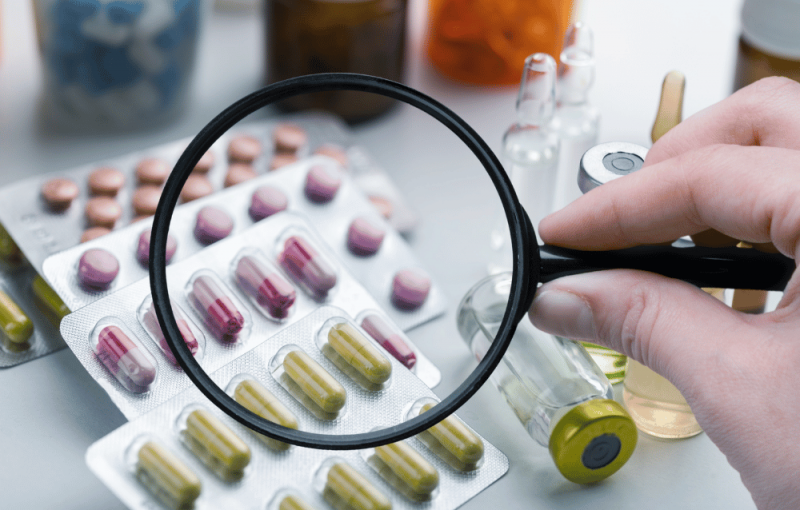Market Dynamics of Pharmaceutical Anti-counterfeiting Technologies: A Comprehensive Study
Counterfeit pharmaceuticals pose a significant threat to public health, as they can contain incorrect ingredients, improper dosages, or even toxic substances. To combat this menace, the pharmaceutical industry has been steadily adopting advanced anti-counterfeiting technologies. These technologies play a crucial role in safeguarding medicines, maintaining the integrity of the supply chain, and ensuring patient safety.
The global pharmaceutical anti-counterfeiting technologies market has been witnessing remarkable growth in recent years. This growth is driven by several factors, including the rising incidence of counterfeit drugs, stringent regulations, and the increasing awareness of the need for secure pharmaceutical packaging.
Counterfeit Drugs: A Global Concern
Counterfeit drugs have become a global concern, affecting both developed and developing countries. These fake medications not only jeopardize patients' health but also erode trust in the pharmaceutical industry. According to estimates by the World Health Organization (WHO), approximately 10% of drugs worldwide are counterfeit, with the numbers being significantly higher in certain regions.
The Role of Anti-counterfeiting Technologies
Pharmaceutical companies are investing heavily in anti-counterfeiting technologies to protect their brands, ensure product integrity, and maintain patient safety. These technologies encompass a wide range of solutions, including:
- Serialization and Track-and-Trace Systems: Serialization involves assigning a unique identifier to each pharmaceutical product, allowing it to be tracked throughout the supply chain. This technology enables rapid identification of counterfeit products and recalls if necessary.
- Tamper-Evident Packaging: Tamper-evident packaging features seals or indicators that reveal if a package has been opened or tampered with. This helps consumers and supply chain stakeholders identify potentially compromised products.
- Authentication Labels and Holograms: Authentication labels and holograms are visually verifiable features that are difficult to replicate. They serve as quick identifiers of genuine products for both consumers and inspectors.
- RFID (Radio-Frequency Identification): RFID technology uses radio waves to track and identify products in real-time. It provides accurate and efficient inventory management and helps prevent the distribution of counterfeit drugs.
- Data Analytics and Artificial Intelligence: Data analytics and AI are increasingly used to monitor supply chains and detect irregularities that may indicate counterfeit products. These technologies can analyze vast amounts of data and identify patterns that may be indicative of counterfeiting.
Regulatory Landscape
Stringent regulations and government initiatives have played a pivotal role in driving the adoption of anti-counterfeiting technologies in the pharmaceutical industry. Regulatory bodies such as the U.S. FDA (Food and Drug Administration) and the European Medicines Agency (EMA) have mandated the use of serialization and track-and-trace systems in drug manufacturing and distribution.
Market Growth and Outlook
The pharmaceutical anti-counterfeiting technologies market is poised for continued growth in the coming years. The increasing globalization of the pharmaceutical supply chain, coupled with rising consumer awareness, will drive the demand for advanced anti-counterfeiting solutions. Additionally, the COVID-19 pandemic has further emphasized the importance of secure supply chains, boosting the adoption of these technologies.
Conclusion
The pharmaceutical anti-counterfeiting technologies market is a vital component of the pharmaceutical industry's efforts to combat counterfeit drugs. These technologies not only protect the interests of pharmaceutical companies but also safeguard the health and well-being of patients worldwide. As the pharmaceutical supply chain becomes increasingly complex and global, the role of anti-counterfeiting technologies will continue to expand, ensuring the integrity of the medications we rely on for our health and safety.
Read Our More Blogs : https://healthcarenewsbulletin.blogspot.com/2023/09/global-anti-alzheimer-therapies-market.html
https://healthcarenewsbulletin.blogspot.com/2023/09/global-distraction-osteogenesis-devices.html
https://healthcarenewsbulletin.blogspot.com/2023/09/global-hypodermic-needles-market.html
https://healthcarenewsbulletin.blogspot.com/2023/09/global-vascular-grafts-market-current.html
https://healthcarenewsbulletin.blogspot.com/2023/09/global-remicade-biosimilars-market.html
